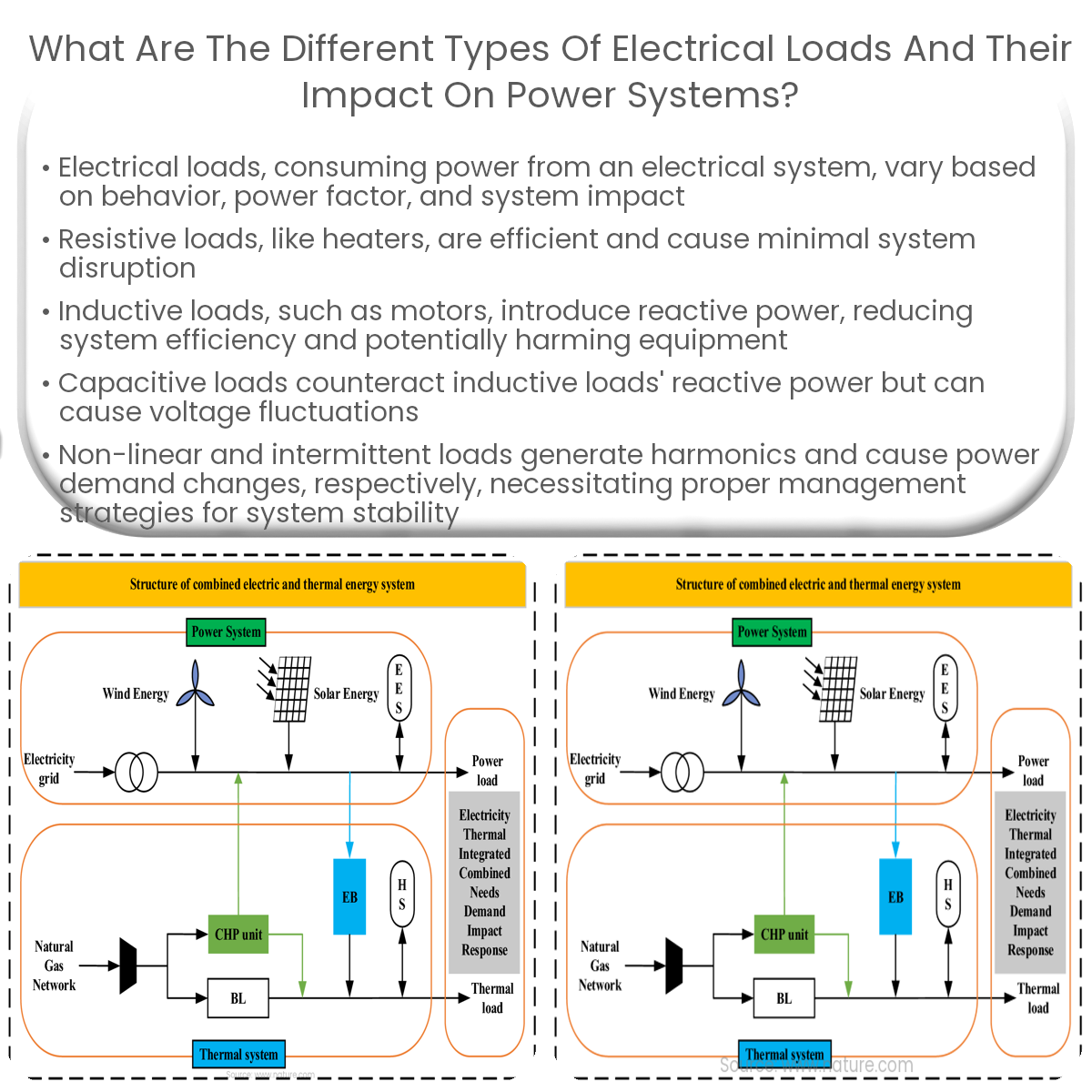Electrical loads include resistive, inductive, capacitive, non-linear, and intermittent types, each affecting power systems’ efficiency and stability differently.
Types of Electrical Loads and Their Impact on Power Systems
Electrical loads are devices or equipment that consume power from an electrical system. They are classified based on various factors, including their behavior, power factor, and impact on the system. Understanding the different types of loads is crucial for efficient power system design and operation.
1. Resistive Loads
Resistive loads, such as incandescent lamps and electric heaters, consume power to produce heat or light. These loads have a power factor of 1, meaning they don’t introduce any reactive power into the system. Resistive loads have minimal impact on power systems, as they do not cause voltage fluctuations or harmonic distortion.
2. Inductive Loads
Inductive loads, like motors, transformers, and solenoids, have a magnetic field that introduces reactive power into the system. This reactive power causes a lagging power factor, reducing the system’s efficiency and leading to increased power losses. Inductive loads can also generate harmonics, which can degrade power quality and damage sensitive equipment.
3. Capacitive Loads
Capacitive loads, such as capacitor banks and power factor correction devices, store energy in an electric field. These loads have a leading power factor and can counteract the reactive power introduced by inductive loads, improving overall system efficiency. However, capacitive loads can also generate harmonics and cause voltage fluctuations if not properly managed.
4. Non-linear Loads
Non-linear loads, including electronic devices like computers, LED lights, and variable frequency drives, draw current in a non-sinusoidal manner. These loads generate harmonics that can cause voltage distortion, overheating, and premature equipment failure. Proper harmonic mitigation techniques, such as filters and isolation transformers, are crucial for managing the impact of non-linear loads.
5. Intermittent Loads
Intermittent loads, like air conditioners and refrigerators, switch on and off periodically, causing sudden changes in power demand. These fluctuations can cause voltage dips, system instability, and increased power losses. Effective load management strategies are essential to minimize the impact of intermittent loads on power systems.
Conclusion
Understanding the different types of electrical loads and their impact on power systems is essential for efficient system design, operation, and maintenance. By properly managing and mitigating the effects of various load types, it is possible to optimize power system efficiency, minimize power losses, and ensure reliable and stable power supply.


